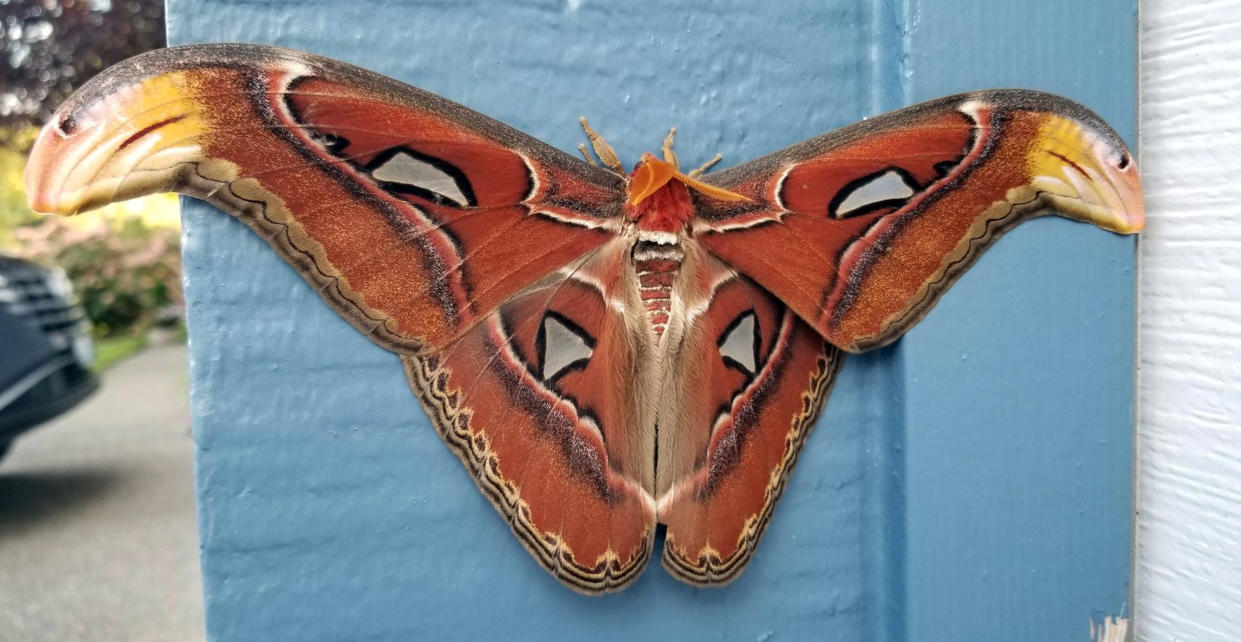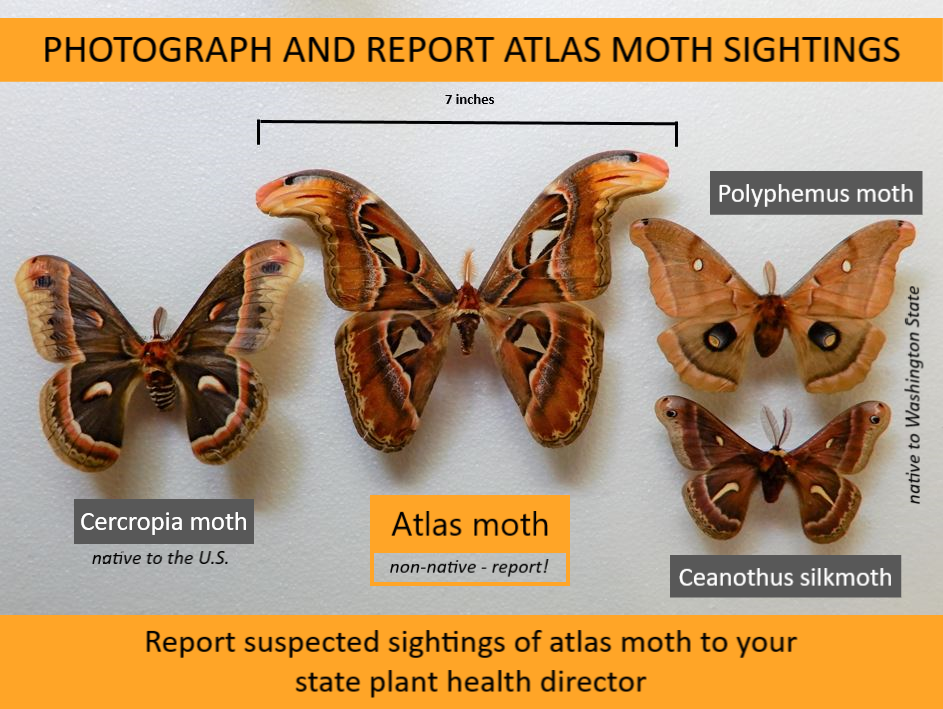An Atlas Moth, One of the Largest Moths in the World, Spotted in U.S. for the First Time, Officials Say
There isn't a campfire big enough to woo the attention of a 10-inch moth reported in Washington state last month.
Wildlife officials in the state say an atlas moth, one of the largest moths in the world, has been found in the U.S. for the first time, and they're asking bug-watchers to keep an eye out for more.
The huge moth was spotted in Bellevue, near Seattle, and a University of Washington professor reported it to the Washington State Department of Agriculture on July 7, the department said.

The USDA later confirmed it was an atlas moth and said it believes the insect is the first of its kind in the U.S., the WSDA said in a statement earlier this month.
“This is a ‘gee-whiz’ type of insect because it is so large,” Sven Spichiger, the department's managing entomologist, said in the release. “Even if you aren’t on the lookout for insects, this is the type that people get their phones out and take a picture of — they are that striking.”
The department is asking anyone who encounters an atlas moth to notify wildlife officials in their state. The moths are not dangerous, so there isn't a public health concern. But they are considered a "federally quarantined pest," meaning it's illegal to raise or sell them without a permit from the USDA, the WSDA said.

Spichiger said any additional sightings may help his team understand why the moth was in Washington.
“This is normally a tropical moth. We are not sure it could survive here,” Spichiger said. “USDA is gathering available scientific and technical information about this moth and will provide response recommendations, but in the meantime, we hope residents will help us learn if this was a one-off escapee or whether there might indeed be a population in the area.”
Anyone in Washington who spots one should email photos to pestprogram@agr.wa.gov. Outside of Washington, the WSDA recommends contacting your state's plant officials.
